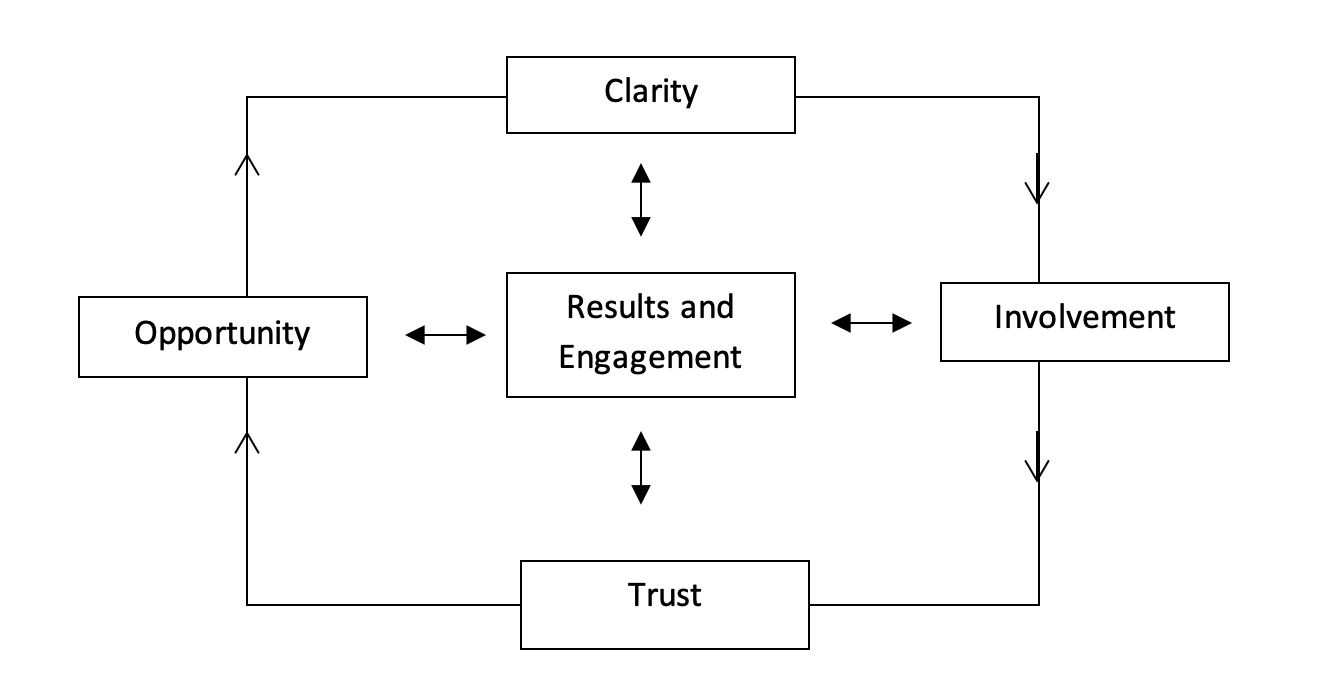Four Culture Secrets to Building an Outstanding Business
Context
This article is written for those inspirational and entrepreneurial leaders and owner managers who are on a mission to create an outstanding business – a company that is respected by all its stakeholders and one that not only achieves outstanding results but is a great place to work.
The writer has spent the last 40 years actively seeking out and connecting with people who share these values, mind-set and passion for putting people and business together with an eye to releasing the potential of both.
World Class Research – facts to underpin this article’s core assertion that strategy and culture must align to create sustainable and outstanding success
The leadership and management guru, Peter Drucker, famously said “Culture eats strategy for breakfast!”
In 2013, Torben Rick in Leadership Magazine (What is the Relationship between Culture and Strategy?) picked up on this and put into words what I had been observing about why some businesses achieve outstanding success and why others, at best, remain mediocre. He painted a picture which has helped me enormously and I hope it helps you too.
The key points from Torben’s work are:
“Strategy drives focus and direction while culture is the emotional organic habitat in which a company’s strategy either lives or dies.”
“Strategy is just the headline on the company story, culture needs a clearly understood language to embrace and tell the story. That story includes mission, vision, values and expectations.”
“Culture is an incredibly powerful factor in a company’s long-term success. No matter how good a strategy is, when it comes down to it people always make the difference.”
The Light Bulb Moment
Having read this, it brought home to me that because strategy is rational and logical in nature, it factually represents the ‘What’ of business. It often therefore gets the most attention and this can skew leadership and management behaviour away from culture which, by definition, is about people and represents the ‘How’ – how people behave, how they feel, whether they are engaged or motivated.
Of course you need both – the ‘What’ and the ‘How’ need to be joined up and aligned but how do you do this?
Against this context C-I-T-O was born – an approach and philosophy to aligning culture and behaviour to the core mission of the business – to be the very best it can become through empowering line managers and their teams to drive personal and team performance.
C-I-T-O – Four Culture Secrets to Being the Best
The principles of C-I-T-O were formulated by combining the richness of significant research into the direct correlation between high performance in the workplace and the role of behaviour and culture (“The Seven Secrets of Highly Effective Leaders”, Professor Robin Stuart-Kotze) and the proven impact of motivation and emotion on performance (Reeve, Motivation and Emotion 1986).
The C-I-T-O Model – Joining up the performance and engagement dots

©TDA Transitions and Learning – Being the Best – 2019
Secret 1: Bring Clarity and Purpose to the Workplace. If you don’t know what 10 out of 10 looks like, how can you achieve it?
Mapping as a team what the business must define and do well to achieve its results is a powerful and actually a straight-forward process. Typically there are five – eight ‘delivery / customer experience’ stages to put into a customer journey map.
The simplicity and knack is to involve core members in workshops to answer the questions “For that stage, what must we get right?” “What does Best look like?”
Once the overall business has been ‘success templated’, the next thing is to enable the team to suggest improvement projects which can then be put into a business case template to be reviewed by the Board.
Once improvement projects have been signed off and become mainstream I have noticed that team members look again at their roles with much more emphasis on purpose, value, outputs and relationships.
The clarity that comes from working though this type of activity is transformational and empowering as it often dispels doubts and encourages the team to find better, clearer, more efficient ways of doing things. The key is to get everyone talking to each other so that roles and relationships all fit together and, where there are differences of views, these can be ironed out.
Secret 2: Involvement – “Ask Beats Tell Hands Down”
My experience of running these types of ‘involving workshops’ (talked through and set up with managers prior) is that if you ask those closest to the point of delivery or issue, you tend to get quality inputs, including suggestions about how to do things better. Everyone wants to see their ideas implemented – this drives and inspires strong feelings of ownership and accountability and, as surely as night follows day, results follow.
Secret 3: Trust – Building and Growing It “Out of acorns…”
Nothing grows trust better than creating shared experiences and growing a shared understanding of roles. So looking creatively for opportunities to do this on projects, contracts, at meetings and presentations, especially where team members do not typically work together, is a really smart thing to do. A great way to do this is to ask for Champions to back and support improvement projects and let the teams, with just a few sensible guidelines, make all the running. The results can be transformational for those involved and for the business!
Secret 4: Opportunities to Make a Difference – It’s not what we are today that counts, it’s what we could become
There is nothing more powerful than seeing your suggestions for change and those of your team implemented and then given the opportunity to make them happen. If leadership / management tune into this motivational fact, my experience is that teams always rise to the occasion. You have kick-started a fresh way for teams to better communicate and work together which they know can be replicated in the future.
As a CEO recently said after several years of implementing this approach “This is making me a lazy manager but a very delighted leader!”
Values, Behaviour and Culture – Judge people on what they do, not what they say
The final piece of this overall ‘Four Secrets C-I-T-O’ approach is to join up the performance dots that underpin them by putting the focus on behaviour. What does Best Behaviour look like?
- Team behaviours – What can help us? What have we noticed that can get in the way?
- Role behaviours – What behaviours make for success? What must be avoided?
As with everything mentioned in this article, the knack to making this work is to get the team to come up with the answers and to suggest the team routines that they assess will work best. The role of the leaders can then be likened to that of a conductor with the team making the music.
Just to conclude with a special point on values as they not only characterise culture, they determine it. Values are the beginning point and culture is the outcome – the way we all play them out. Professor Kotze puts it like this “Culture is the way we do things around here. It is shaped by what gets rewarded, punished or ignored. Culture then is a reflection of the company values.” To make CITO work effectively, it needs to be wrapped by a set of values “This is what is valued around here and this is what isn’t.”
Chris Dunn
March 2019
Chris is designer of the Being the Best approach and a CIPD Finalist this year for the client work done in this area. He is author of “Who Are Your Best People?” written with Professor Robin Stuart Kotze. For further information on Chris’ work, see www.beingthebest.co.uk



